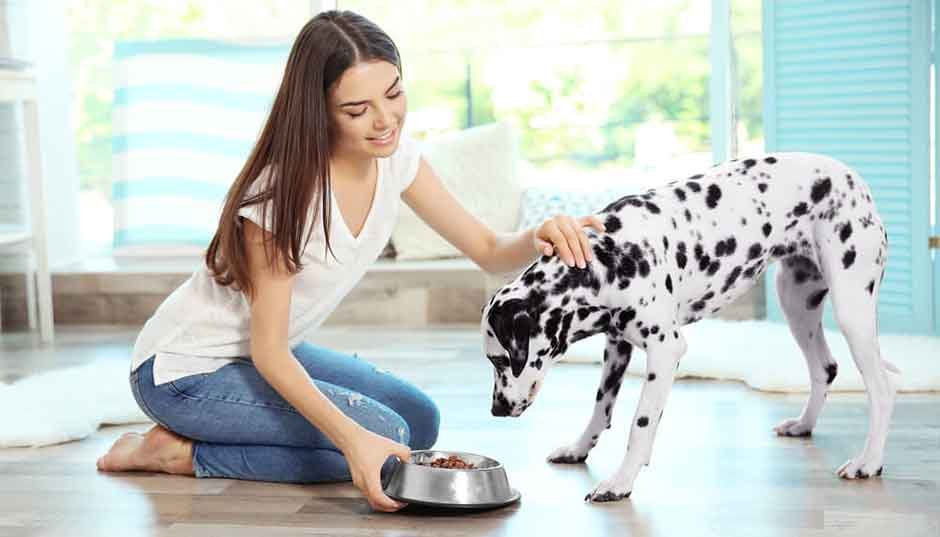Obesity is a growing factor amongst dogs in the UK, with over 50% classified as overweight or obese. It occurs when a dog consumes more calories than it burns, accumulating excess body fat.
There are a few ways how to tell if your dog is obese or overweight, which will be explored in this guide. Preventing obesity early on is the best way to ensure your dog lives a long, happy life. Read on to find out more.
Consult With Your Veterinarian or Pet Nutritionist
Before beginning, if you are concerned about your dog, you should consult your veterinarian or pet nutritionist, who can assess your dog’s weight and body condition.
They will also be able to notice any potential health implications like hypothyroidism that may affect your dog’s metabolism and cause weight gain. Lastly, they will be able to give you a detailed diet plan that is fully customised for your dog.
Consulting with a veterinarian is an important step in ensuring the health and well-being of your dog.
Dangers of Obesity in Dogs
Obesity can drastically shorten a dog’s life and makes them much more likely to develop other health implications like diabetes. Some of the serious consequences include the following:
Joint problems: Being overweight as a dog can put extra strain on the joints, leading to osteoarthritis, which is painful for dogs.
Respiratory problems: Overweight dogs can have difficulty breathing, especially during hot weather, due to the increased pressure on their chest and lungs.
Diabetes: Overweight dogs can develop type 2 diabetes, affecting their body’s ability to regulate blood sugar levels.
High blood pressure: Like humans, overweight dogs are at a higher risk of developing high blood pressure, vision loss, and kidney failure.
These are just a handful of the problems that can arise from obesity in dogs, which can drastically decrease a dog’s life span, which none of us wants. Obesity can even cause cancer in some cases, so it is always best to stay well on top of your dog’s diet and ensure they are fed the correct amounts and types of food.
Signs of Obesity in Dogs
The first step in dealing with an obese or overweight dog is to recognises the problem. Unfortunately, social media can sway our perception of a dog’s healthy weight or even the perfect weight for a specific breed. Here are a few signs you should be alert about:
Round, bulging belly: A rounded belly is a classic sign of obesity in dogs. A healthy dog will have a defined waist with a slight tuck-up behind the rib cage.
Difficulty breathing or increased panting: As mentioned above, overweight dogs can have a harder time breathing during exercise, particularly in hot weather. If you notice this at an unusual amount or speed, then it may be a sign of obesity.
Reduced energy and mobility: Obesity can lead to decreased mobility and energy when exercising or walking. If you notice a change in energy, whether in the house or on a walk, it could be a sign of obesity.
Skin folds or rolls: Overweight dogs typically have many skill folds or rolls around the neck, belly and chest. These folds can trap moisture and promote the growth of bacteria and yeast, leading to skin infections.
Avoidance of exercise: If you notice your dog being a lot less eager to go out for walks/runs, then it may be a result of discomfort, breathing difficulties, or lack of energy. All of which are signs of obesity.
Constant begging for food: If a dog is frequently begging for food, then it’s a sign that they are not feeling full, i.e., consuming more calories than it can burn.
It’s important to monitor these warning signs of obesity and always monitor your dog’s weight. Staying on top of this can help avoid it from getting worse and prevent any possible health problems.
To Conclude
Controlling your dog’s weight is vital in ensuring they live a long, happy, and healthy life. Stopping obesity before it happens is extremely important. It is a lot harder to go back, and it only makes it easier for them to put weight back on.
However, that doesn’t mean your dog is too far gone, or it’s too late; it just takes a level of portion control and dedication, and your dog will be well on its way to a healthy diet.






